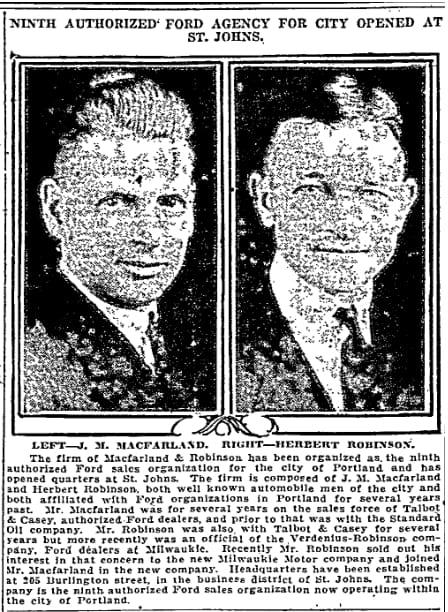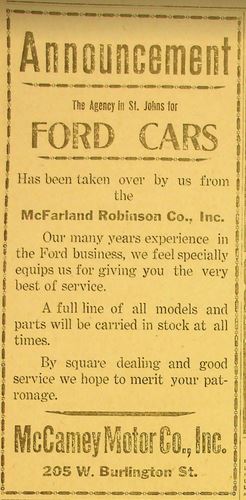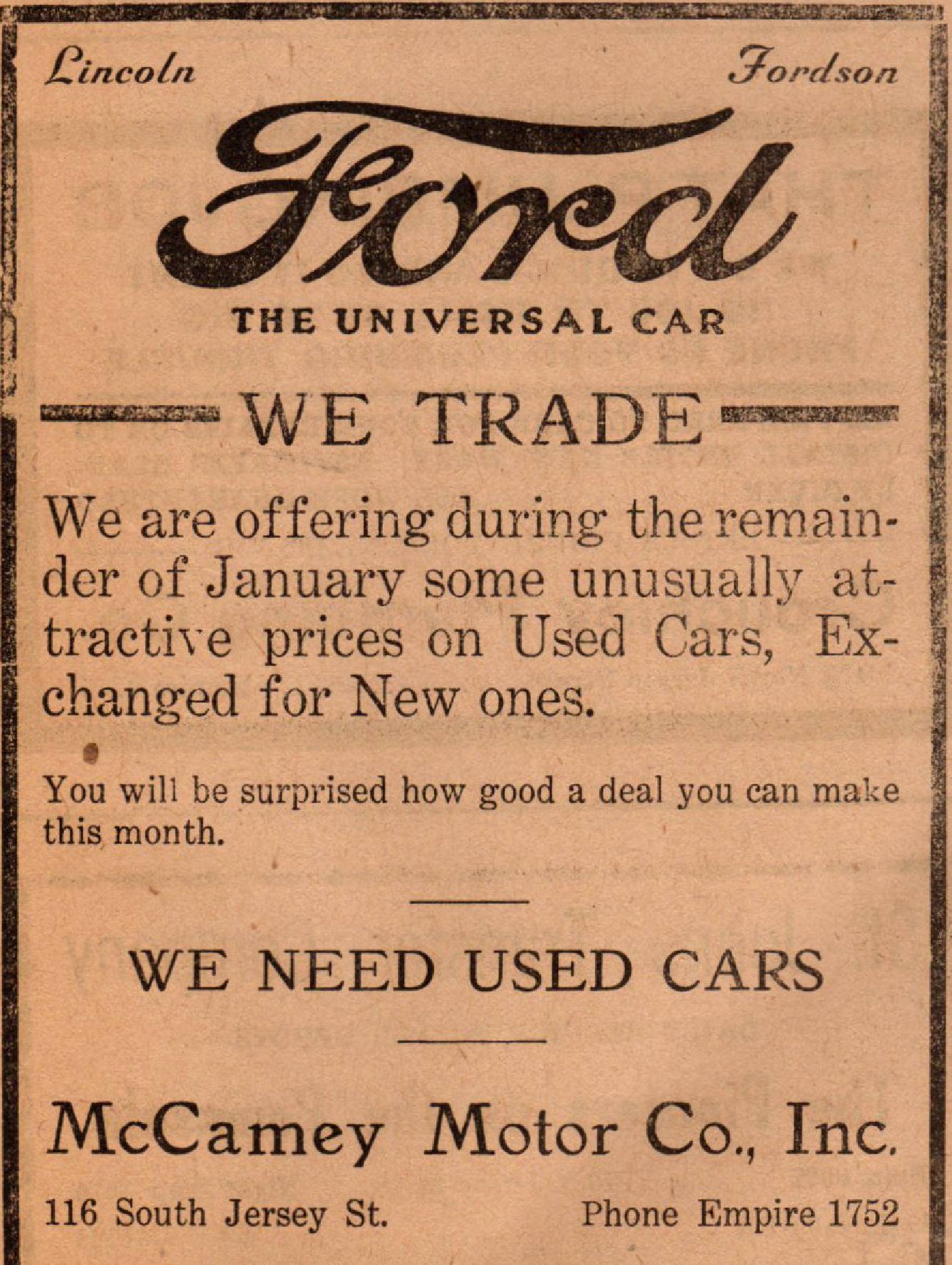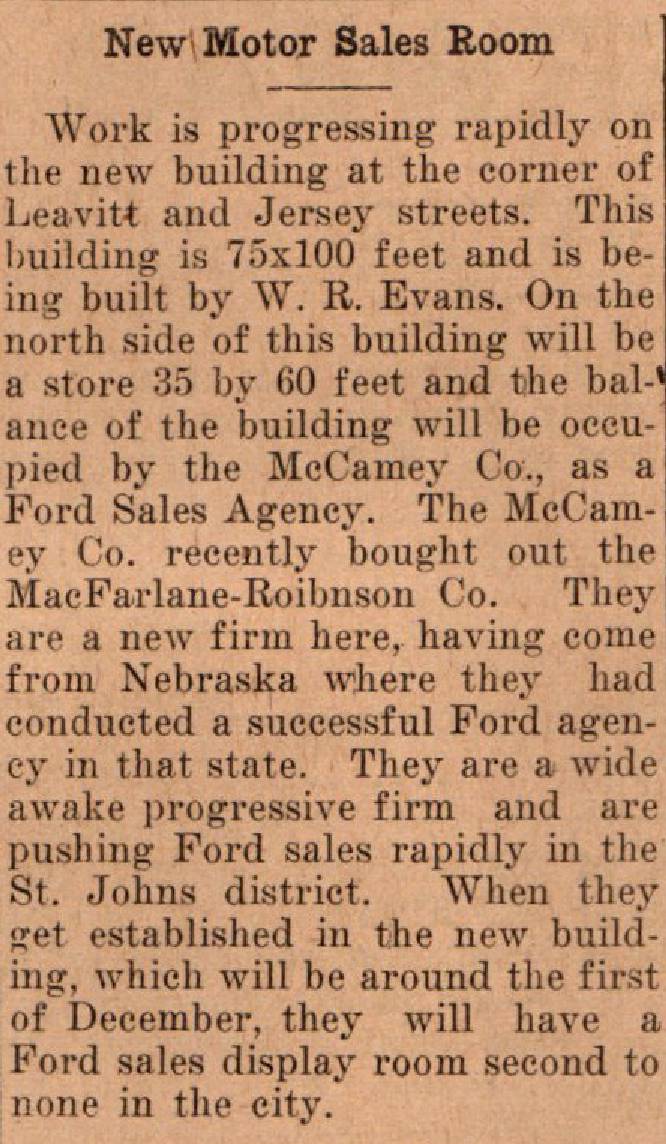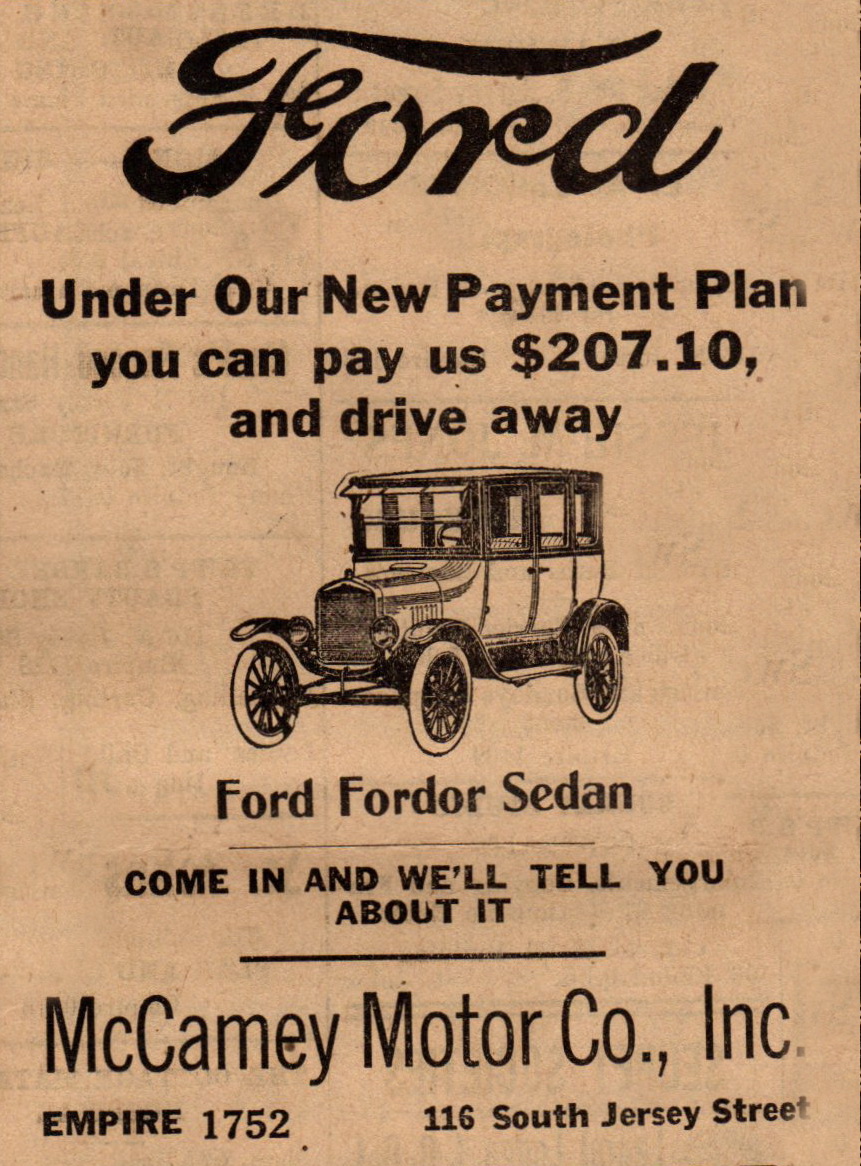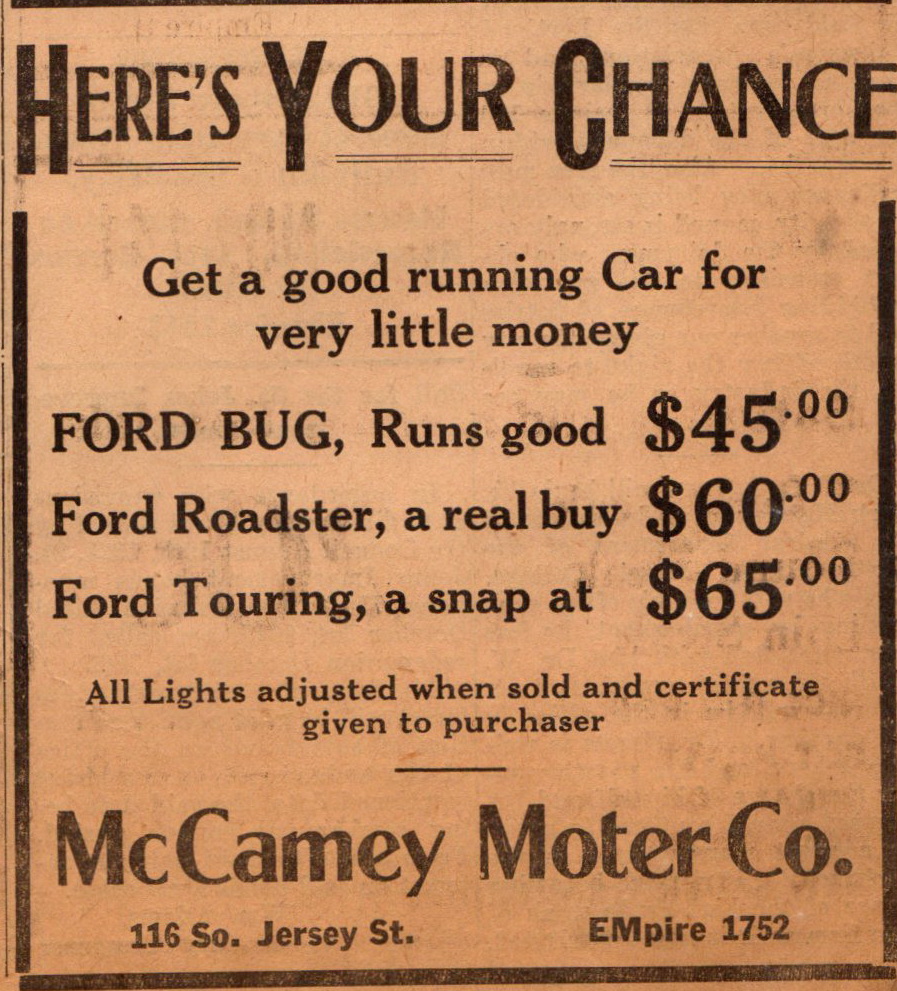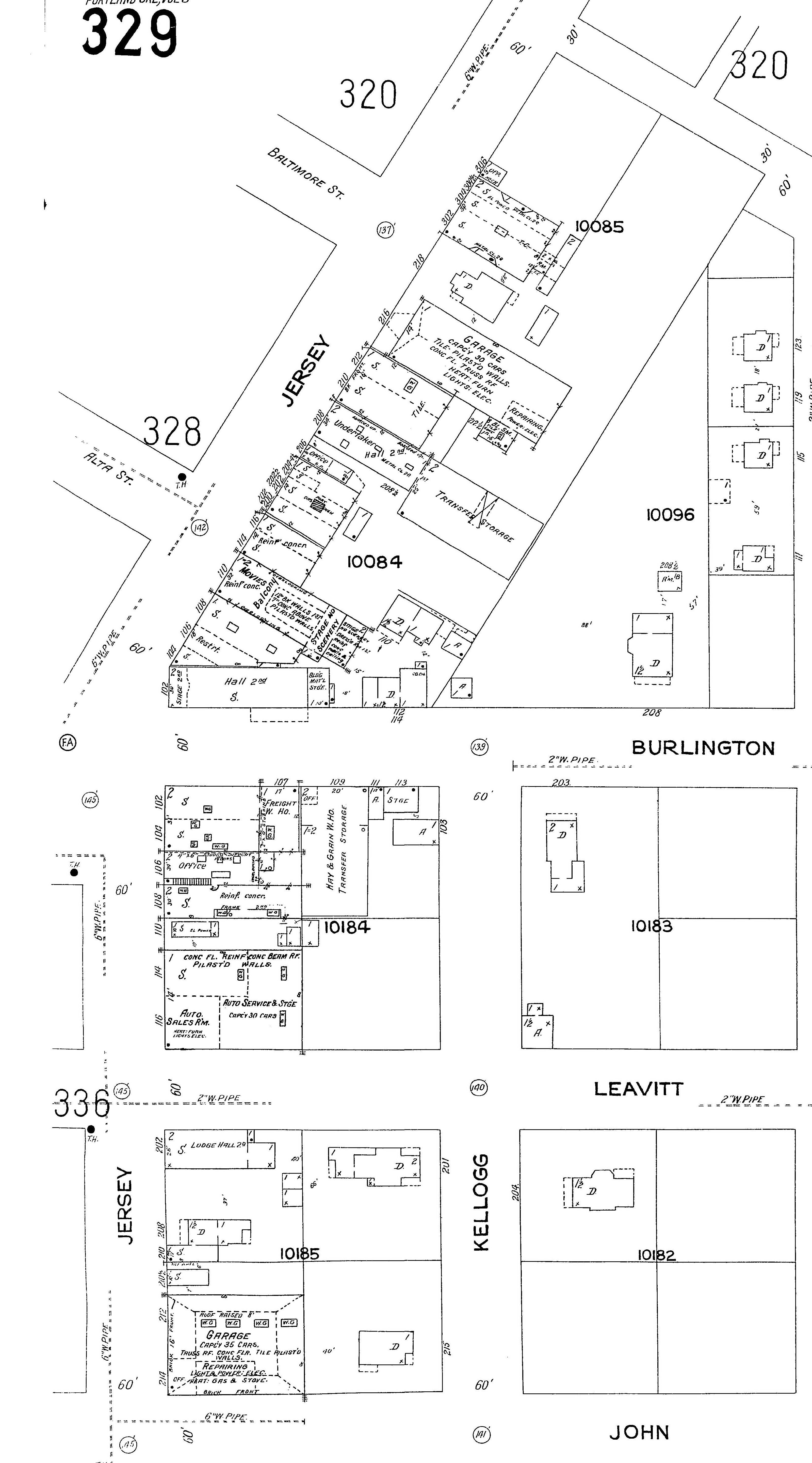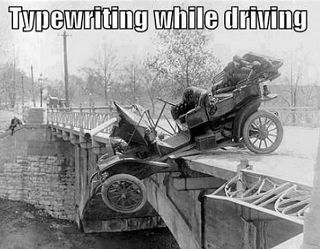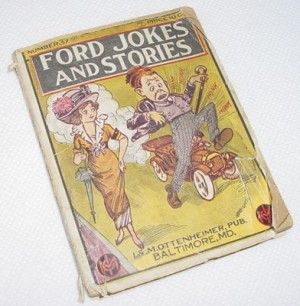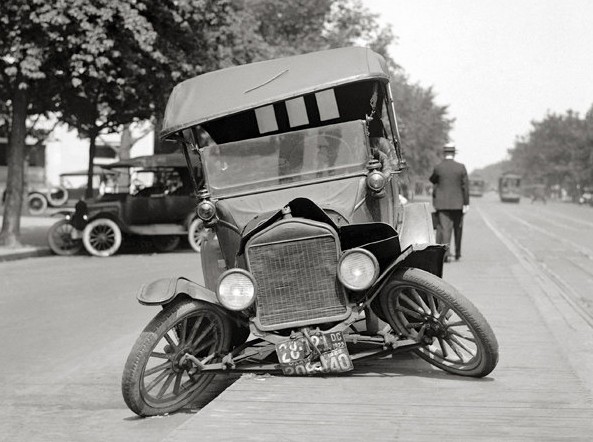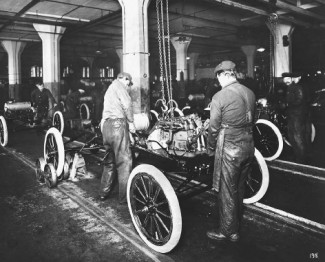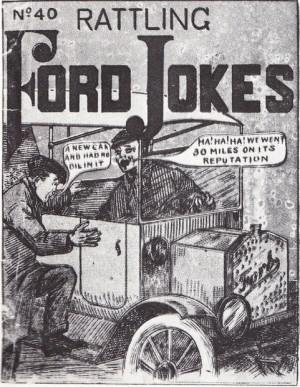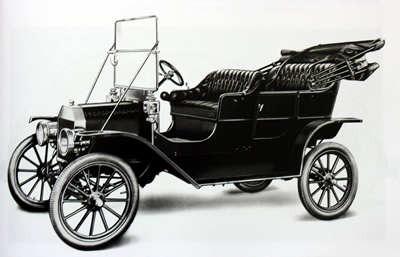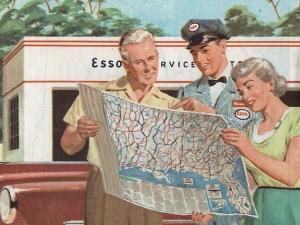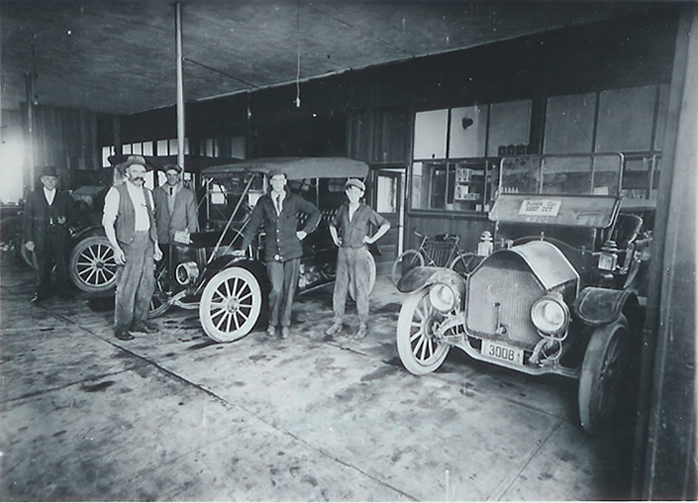 Winford H. Ball's garage on Burlington Ave., across from St. Johns City Hall. Photo taken in 1912 based on license plate of car. Note "Private Car - Keep Off" sign.
Winford H. Ball's garage on Burlington Ave., across from St. Johns City Hall. Photo taken in 1912 based on license plate of car. Note "Private Car - Keep Off" sign.
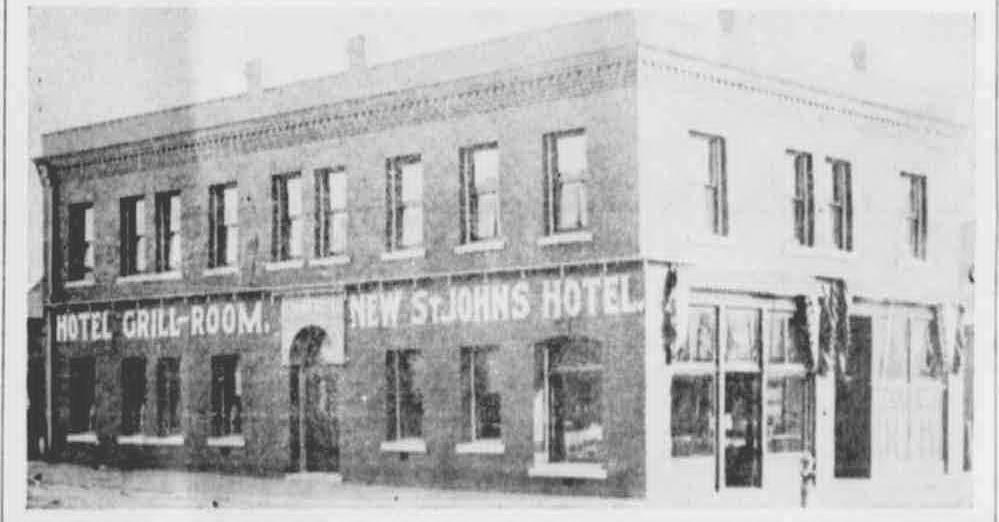 1906 photo showing the Ivanhoe and Burlington sides of the (New) St. Johns Hotel building that was later to be used by the MacFarland - Robinson Ford Agency
1906 photo showing the Ivanhoe and Burlington sides of the (New) St. Johns Hotel building that was later to be used by the MacFarland - Robinson Ford Agency
MacFarland - Robinson Ford Agency was established in the (New) St. Johns Hotel building, also using in it's operation we believe was the the warehouse on Bradford St. owned by Lauthers Mercantile. The Agency was located in 1922 and 1923 at 205 ( now 7238 N Burlington ) across from City Hall. McCamey Motors bought McFarland - Robinson out in August 1923 and in January of 1924 moved into their new building at 8501 N Lombard (Pattie's Home Plate Cafe).
Ford Motor Company dominated the automobile (Model T) and tractor (Fordson) market for a time (for cars, roughly 1910 - 1925; for tractors, roughly 1917 - 1925). Ford was the only automotive firm to sell cars, trucks and tractors simultaneously from 1917 to 1928.
November 1923
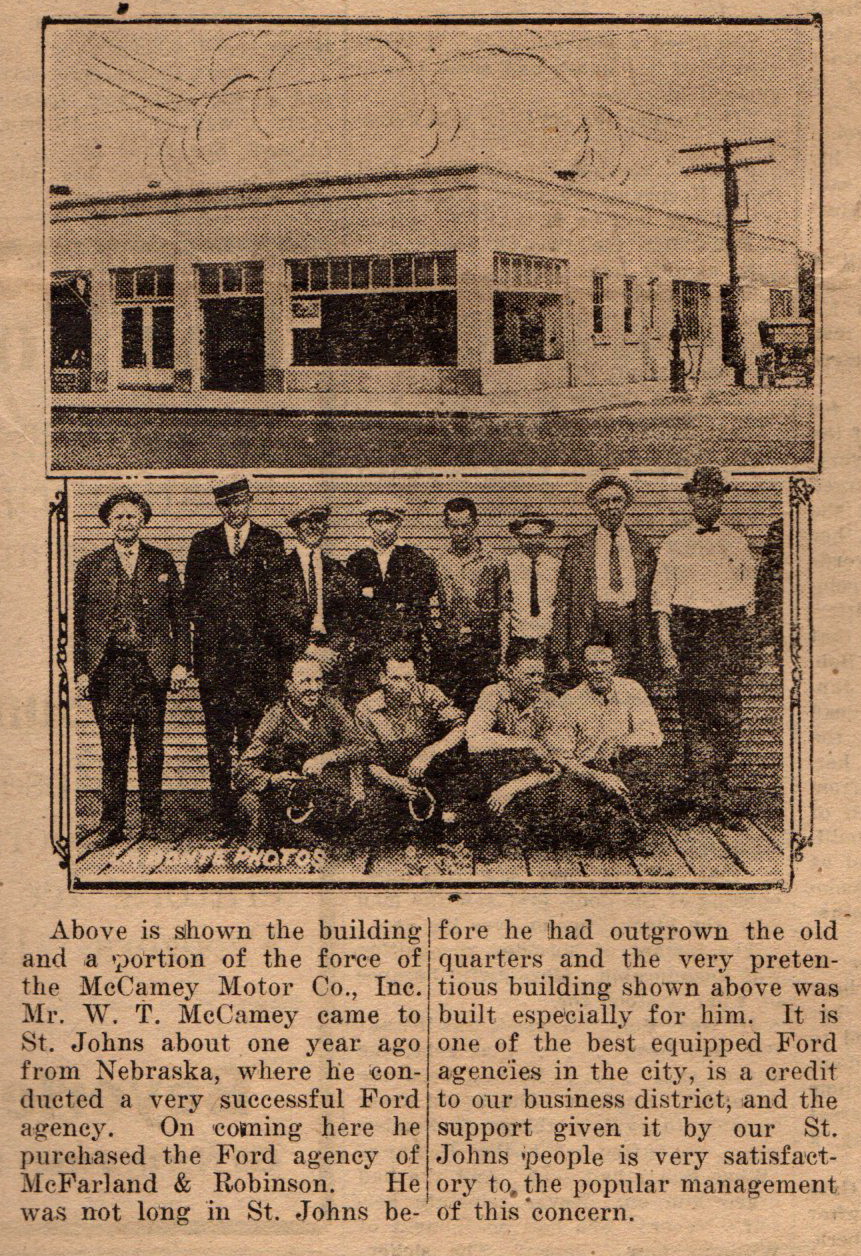 8501-8511 N Lombard Home today to Pattie's Home Plate and The Man's Shop. Photo taken July 1924, from the St Johns Review.
8501-8511 N Lombard Home today to Pattie's Home Plate and The Man's Shop. Photo taken July 1924, from the St Johns Review.
St Johns had many Auto Agencies (Dealerships) in the early twenties. W. R. Evans of the St Johns Hardware Co. built both the Ford (1924) and Chevrolet (1919) dealership buildings on Jersey St. (Lombard St.) - one block from each other.
 Billy Murray - The Little Ford Rambled Right Along
Billy Murray - The Little Ford Rambled Right Along
Click to Enlarge
Q: What goes on pages 4-5 of the Ford's user's manual?
A: The train & bus schedule.
Back in the twenties a lunatic escaped from the asylum and stole the first car he found - a Ford touring car. His first stop was the laundry nearby, where he somehow persuaded two employees to take a break and go for a high speed ride. Unfortunately, the Ford, the lunatic, and the laundrymen reached the grade crossing at the same time as the train.
When the police arrived, all they found was a nut and two washers.
View Model T Ford
Assembly Line Replica
The Ford Model T, introduced in 1908, became the butt of jokes by comedians and competitors. Henry Ford encouraged the practice.
In spite of, or possibly because of, the torrent of jokes about the Model T and its peculiar design, Ford did not purchase any advertising between 1917 and 1925. Its peculiarities were numerous. The fuel tank was under the driver’s seat and employed gravity flow to the updraft carburetor. Depending on the steepness of a hill and fuel level, it was sometimes necessary to climb the hill in reverse. The driver’s seat had to be removed to add fuel or measure the fuel level with a wooden calibrated stick. Gas stations often gave these out for free.
For many years the Model T came equipped with only the barest necessities. There was no speedometer, starter, temperature gauge, or bumpers.
In 1914, the Ford Motor Company opened an assembly and distribution plant in Portland – in a three-story brick building at 11th and S.E. Division. Finished cars could be stored on the roof. In the beginning they were able to assemble 10 Model T's a day. For the next twenty years the Ford Building provided employment off and on for some 250 workers, where they assembled Model T, Model A, and Model 18 / 40's. The latter two often referred to as the Ford V8.
The Portland assembly plant built 2,508 1928 Model A's, 15,907 1929 Model A's, and 10,077 1930 Model A's. Ford continued to use its Portland Building until 1939.
Randy & Deborah Sheets ~ Old Zeke Perkins ~
Ike, "Mike, how'd you ever manage to get rid of that danged old Ford?"
Mike, "Well, it weren't easy, Ike. First, we advertised it for sale and nobody'd buy it. Then, we advertised it for free and nobody'd take it. Finally we parked it around behind the house and moved away."
"Hey, I hear your friend bought a new car"
"Yup."
"What kind is it?"
"I don't remember, but it starts with 'P'".
"Aye, must be a Ford, the others start with gasoline!"
The Ford Model T was produced by Henry Ford's Ford Motor Company from October 1, 1908, to May 26, 1927. Automobiles were considered luxury items for the common man until the arrival of the Model T. The Model T was Ford's first automobile mass-produced on moving assembly lines with completely interchangeable parts, marketed to the middle class.
There were several cars produced or prototyped by Henry Ford from the founding of the company in 1903 until the Model T was introduced. Although he started with the Model A, there were not 19 production models (A through T); some were only prototypes. The production model immediately before the Model T was the Model S.
The Model T had a front-mounted 177-cubic-inch (2.9 L) inline four-cylinder engine, producing 20 hp, for a top speed of 40-45 mph. According to Ford Motor Company, the Model T had fuel economy on the order of 13-21 mpg- The engine was capable of running on gasoline, kerosene, or ethanol.
The Model T was a rear-wheel drive vehicle. Its transmission was billed as "three speed". In today's terms it would be considered a two-speed, because one of the three speeds was reverse.
The Model T's transmission was controlled with three foot pedals and a lever that was mounted to the road side of the driver's seat. The throttle was controlled with a lever on the steering wheel. The left pedal was used to engage the gear. With the floor lever in either the mid position or fully forward and the pedal pressed and held forward the car entered low gear. When held in an intermediate position the car was in neutral. If the driver took his foot off the left pedal, the Model T entered high gear, but only when the lever was fully forward. In any other position the pedal would only move up as far as the central neutral position. This allowed the car to be held in neutral while the driver cranked the engine by hand. The car could thus cruise without the driver having to press any of the pedals. There was no separate clutch pedal.
When the car was in neutral, the middle pedal was used to engage reverse gear, and the right pedal operated the transmission brake. There were no separate brakes on the wheels. The floor lever also controlled the parking brake, which was activated by pulling the lever all the way back. This doubled as an emergency brake.
Ford wrote in his autobiography that in 1909 he told his management team in the future "Any customer can have a car painted any color that he wants so long as it is black". However, in the first years of production from 1908 to 1913, the Model T was not available in black but rather only grey, green, blue, and red. Green was available for the touring cars, town cars, coupes, and Landaulets. Grey was only available for the town cars, and red only for the touring cars. By 1912, all cars were being painted midnight blue with black fenders. It was only in 1914 that the "any color so long as it is black" policy was finally implemented.
It is often stated that Ford suggested the use of black from 1914 to 1926 due to the cheap cost and durability of black paint. During the lifetime production of the Model T, over 30 different types of black paint were used on various parts of the car. These were formulated to satisfy the different means of applying the paint to the various parts, and had distinct drying times, depending on the part, paint, and method of drying.
More than 15 million Model Ts were manufactured, reaching a rate of 9,000 to 10,000 cars a day in 1925, or 2 million annually, more than any other model of its day, at a price as little as $240. (Source: Wikipedia)
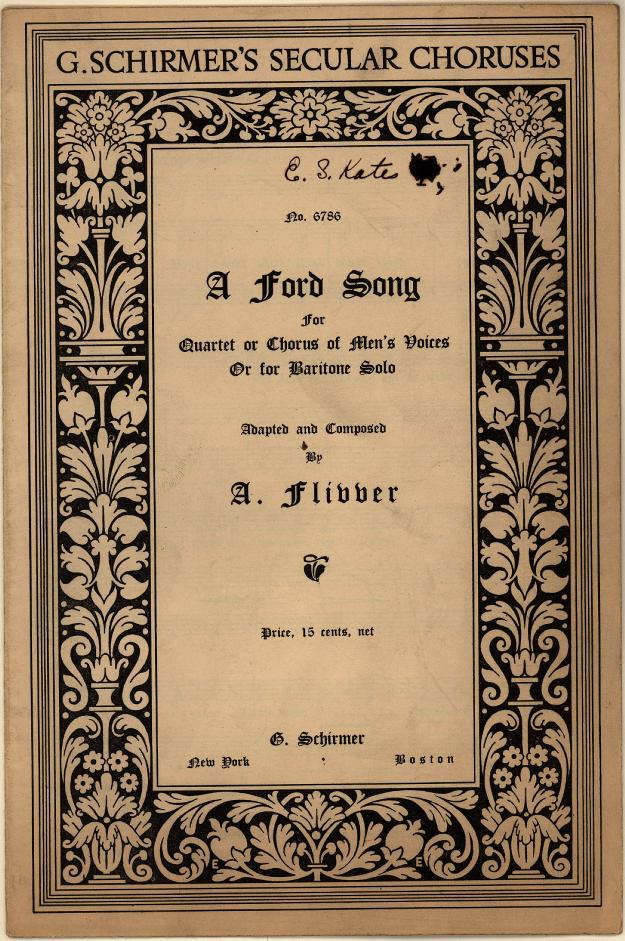 Published in 1918 - also known as
Published in 1918 - also known as
